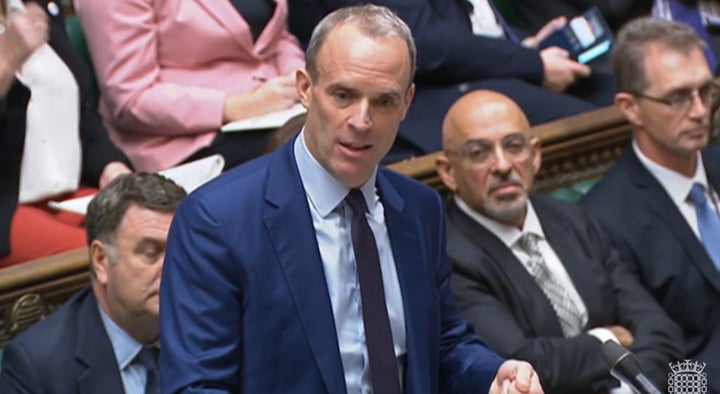
The UK’s unemployment rate is currently at 3.6%, according to new data – a 0.1% rise on August, but still a seemingly small number.
The increase to that annual rate comes from a surprising surge in unemployment in September, when rates reached 3.8% at a time when economists had not expected any change.
The Office for National Statistics (ONS) said this follows a 52,000 drop in people in employment between July and September.
However, 3.6% is still a very low number – allowing deputy PM Dominic Raab to claim on Wednesday’s PMQs: “Unemployment remains at a 50-year low.”
He added that it was “half the level left by the last Labour government”.
On the surface, that sounds like more people are in work, which sounds like a boost for the economy. But it’s much more complicated than that.
Here’s what you need to know.
Why is it still so low, despite the cost of living crisis?
The number of people who have left the workforce altogether due to long-term illness has increased, to a total of 2.5 million. This is a record-high.
These people are still not working now, but because they’re not actively looking for a job, they’re not counted in the unemployment rate.
Long-term illness is not the only reason people might leave the workforce either – taking on extended education, retiring and looking after family are also common reasons for dropping out of employment.
Altogether, the proportion of people aged between 16 and 64 not looking for work (the economic inactivity rate) leapt up to 21.6% between July and September according to the ONS.
What does this mean for employers?
With fewer people looking for work, companies are struggling to recruit workers.
Although new data released in November show the number of job vacancies has fallen to its lowest level since late 2021, they are still estimated to be at around 1,230,000 – that’s a pretty high number of unfilled job roles in the economy.
ONS statistician Darren Morgan also explained the decline didn’t mean more people in employment, but employers just offering fewer roles.
“Job vacancies continue to fall back from their recent peak, with increasing numbers of employers now telling us that economic pressures are a factor in their decision to hold back on recruitment,” he said.
The level of vacancies is also high by historical standards, according to Reuters. A tough labour market makes it hard for businesses to grow, too.
Businesses are already struggling due to the declining value of the pound, and the expectation of a recession certainly doesn’t help.
The Bank of England will worry that a shrinking labour market will add to inflation woes, and add pressure to increase interest rates. This is what the Bank has to do to control inflation, and means borrowing money becomes more expensive.
The Bank of England has already increased interest rates eight times in a row in an effort to control inflation. Even so, it’s just reached a 41-year high of 11.1%.
The Bank has also warned that unemployment will nearly double by 2025 as the UK enters a tough recession.
How does this affect pay?
In a bid to draw in more employees and try to expand their companies, employers are raising wages. But, rises in salary are still not keeping up with the rising cost of living.
So, regular pay (outside of bonuses) grew at an annual rate of 5.7% in the year leading up to September. This is the strongest growth since 2000, outside of the pandemic when workers received large pay rises after returning from furlough.
However, it’s still a long way from inflation, which is at 11.1%.
When this is taken into account, the value of regular pay actually declined by almost 2.7%.
There is also a 4.4 percentage point difference between private and public-sector pay, which could incentivise more workers to strike.

How has the government responded?
Commenting on these new ONS figures, chancellor Jeremy Hunt said he understood “people’s hard-earned money isn’t going as far as it should”.
He added: “Tackling inflation is my absolute priority and that guides the difficult decisions on tax and spending we will make on Thursday.”
He and prime minister Rishi Sunak will announce public spending cuts and tax hikes on Thursday, in their autumn statement.
However, Labour’s shadow chancellor Rachel Reeves said the UK was paying for “12 years of Tory economic mistakes”.
She added: “Real wages have fallen again, thousands of over-50s have left the labour market and a record number of people are out of work because they’re stuck on NHS waiting lists or they’re not getting proper employment support.”
